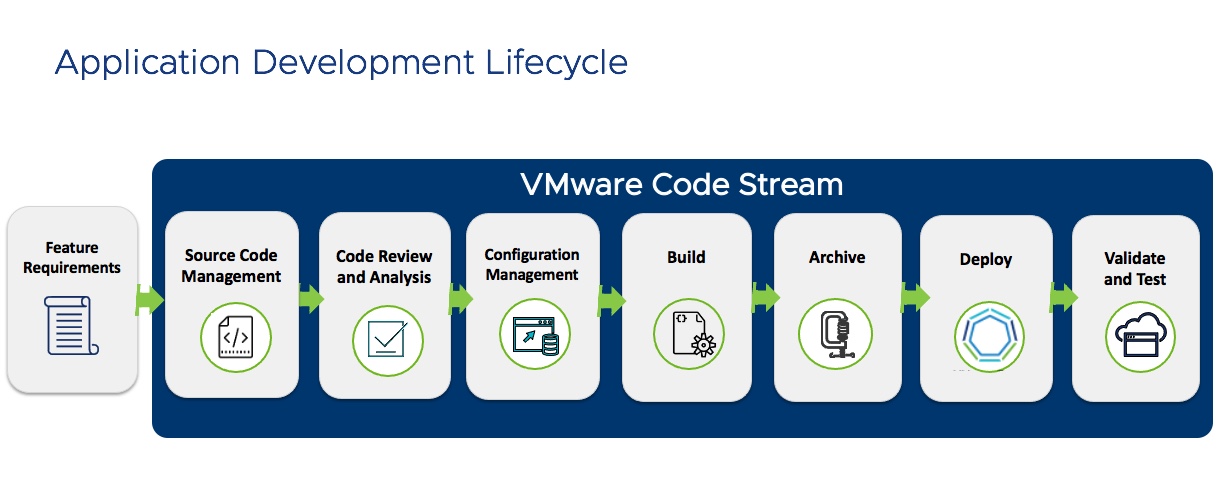by: VMware Senior Director IT Varinder Kumar; VMware IT Director Mehul Patel; VMware IT Manager Manas Singh; and VMware Lead Dev/Ops Engineer Pervinder Sudan
In the first blog of our series on app modernization, we introduced the VMware IT Chief Digital Transformation Office Modern App Platform (CDTO MAP). Powered by VMware Tanzu™, CDTO MAP enables our developers to write and deploy code faster and our infrastructure teams to run modern applications at scale.
This second blog focuses on the “build” component of the software development lifecycle. We will outline how VMware IT uses CI/CD process automation and certified open-source applications to address the challenges commonly faced by development and operations teams.

Driving Applications Modernization
To keep pace with fast-changing business needs and technologies, VMware IT re-engineered its application development and delivery model. We rearchitected several applications to increase business agility and application delivery velocity by building microservices for elastic cloud infrastructure. We then hosted these applications on the CDTO MAP to leverage its exceptional scalability and resiliency.
Of course, core business logic—the aforementioned microservices—are just one part of the modernization journey. IT also used the CDTO MAP to drive automation for CI/CD processes, as well as the responsible use of open-source containers.
Specifically, we:
- extended our continuous integration and continuous delivery (CI/CD) processes for automated build, integration, and deployment of modern applications and open-source products.
- standardized on certified open-source base images for applications and open-source products, which enabled us to safely leverage open-source products for modern application development and deployment.
Extending CI/CD
IT needed to extend CI/CD processes to automate the build, integration, and deployment of both modern and legacy, applications. IT used VMware Code Stream™, which enabled us to deliver applications faster, increase predictability, and reduce our risk of error. This also allowed us to integrate an array of tools across the software development lifecycle to improve code quality, perform static security scans, and deploy applications in a complex landscape of on-premises, cloud-native platforms, and SaaS applications. We then extended its native capabilities in order to use manifest files for dynamic data-driven builds, resource allocations, and application configurations during deployment, which gave us the flexibility to quickly onboard new features and services to the platform.

Providing Our Developers With Certified Open-Source Tools
To build and deploy containerized applications in a hybrid cloud environment and keep our container images up to date, IT leveraged VMware Tanzu™ Application Catalog™. During the application build process, the latest version of the base image is used to build containers. From a Day 2 operations perspective, as new base images are available with new service packs addressing security vulnerabilities, images are extracted and applied to rebuild existing applications. The updated images are then deployed in rollover fashion. This translates to a completely automated application delivery process for modern applications, without compromising agility, quality, and security.
In summary, VMware IT leverages its CDTO MAP to rearchitect applications and standardize the build processes, which enabled us to:
- deliver applications in an agile, secure, consistent manner—from development to production.
- unify developer and operation team experiences.
- perform anytime deployment (previously running on a schedule) to accelerate delivery.
- eliminate the manual effort of individually updating open-source images with security patches and upgrades.
- easily drive and maintain compliance with Information security policies.
- increase overall operational efficiency by 20 percent.
Stay tuned for part three of this blog series, where we will share how we address key day-to-day challenges in managing modern applications.
VMware on VMware blogs are written by IT subject matter experts sharing stories about our digital transformation using VMware products and services in a global production environment. Contact your sales rep or vmwonvmw@vmware.com to schedule a briefing on this topic. Visit the VMware on VMware microsite and follow us on Twitter.



